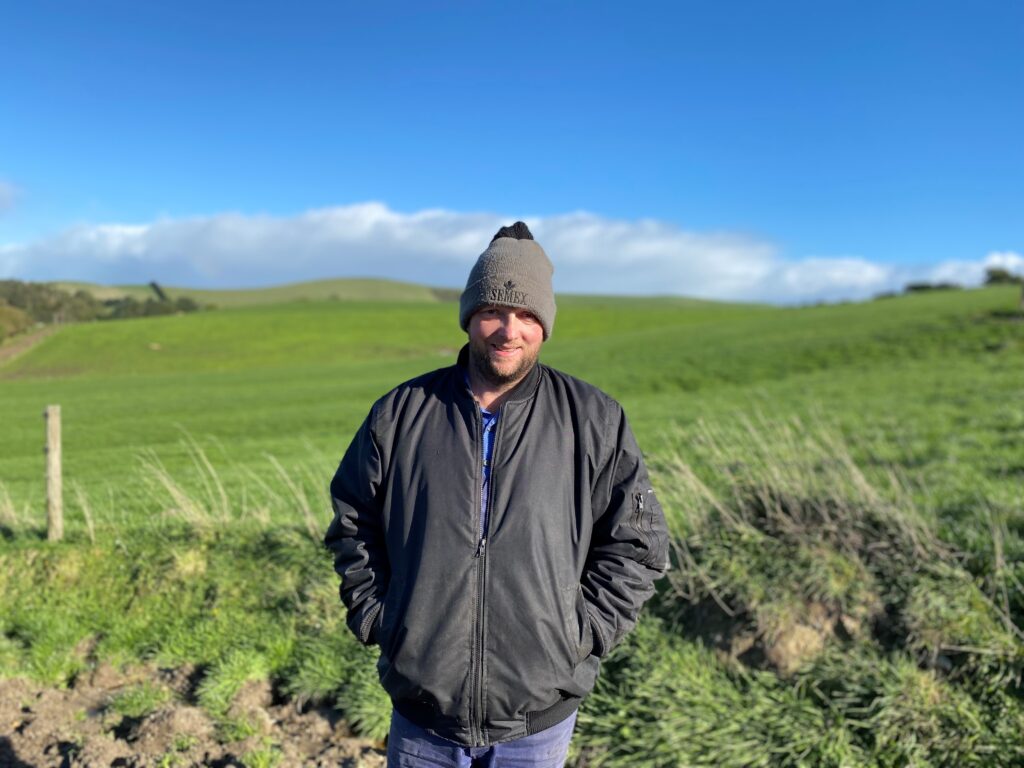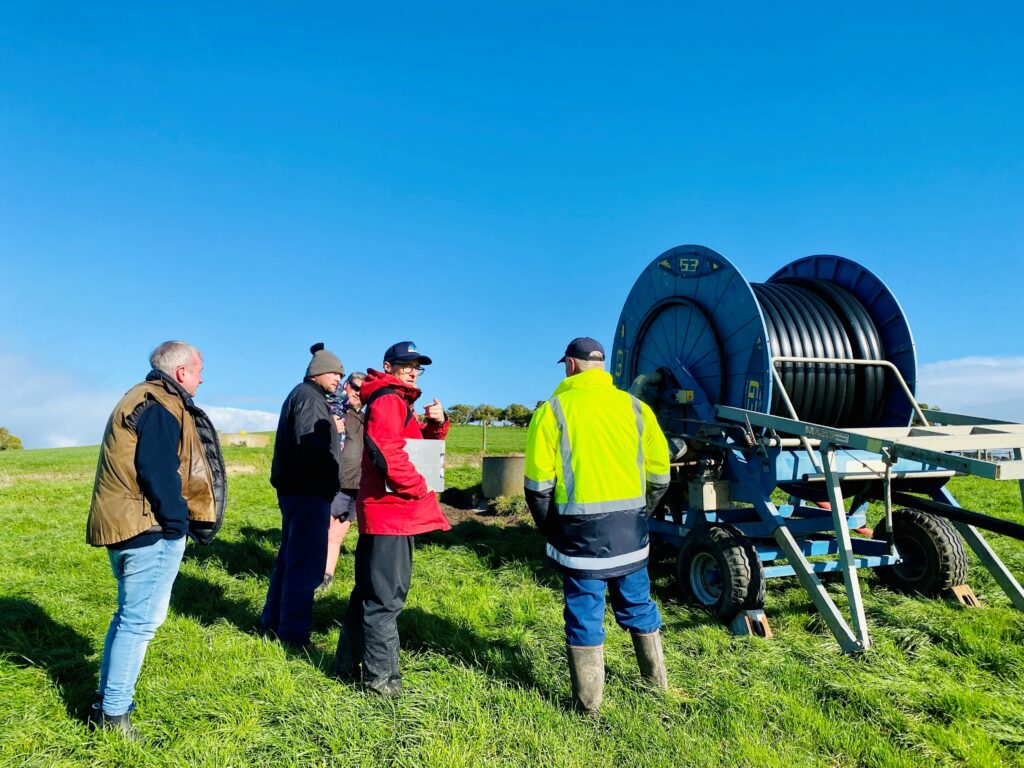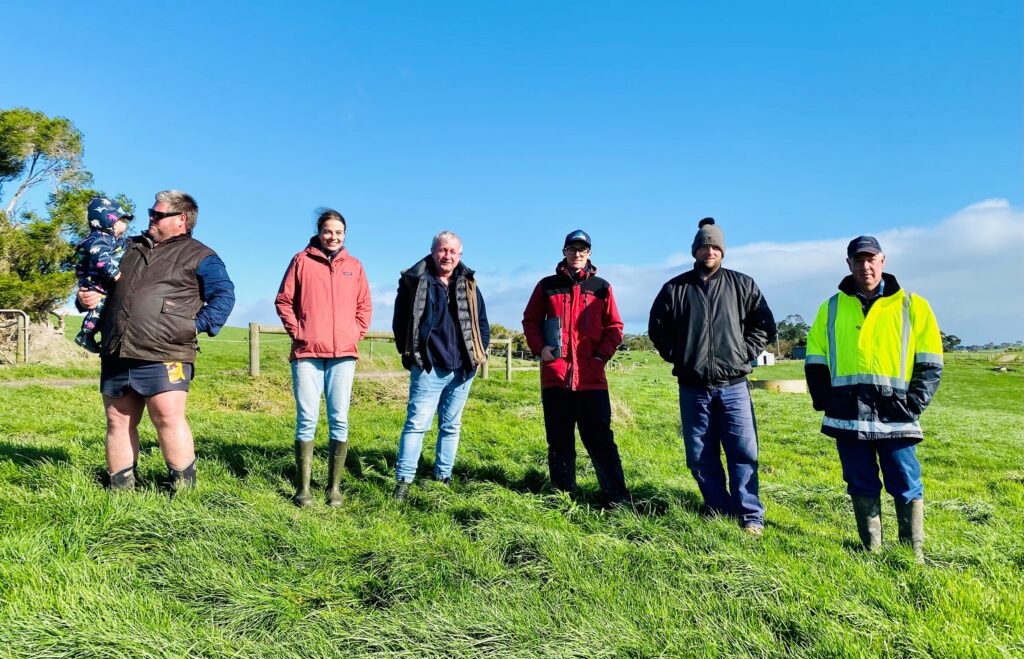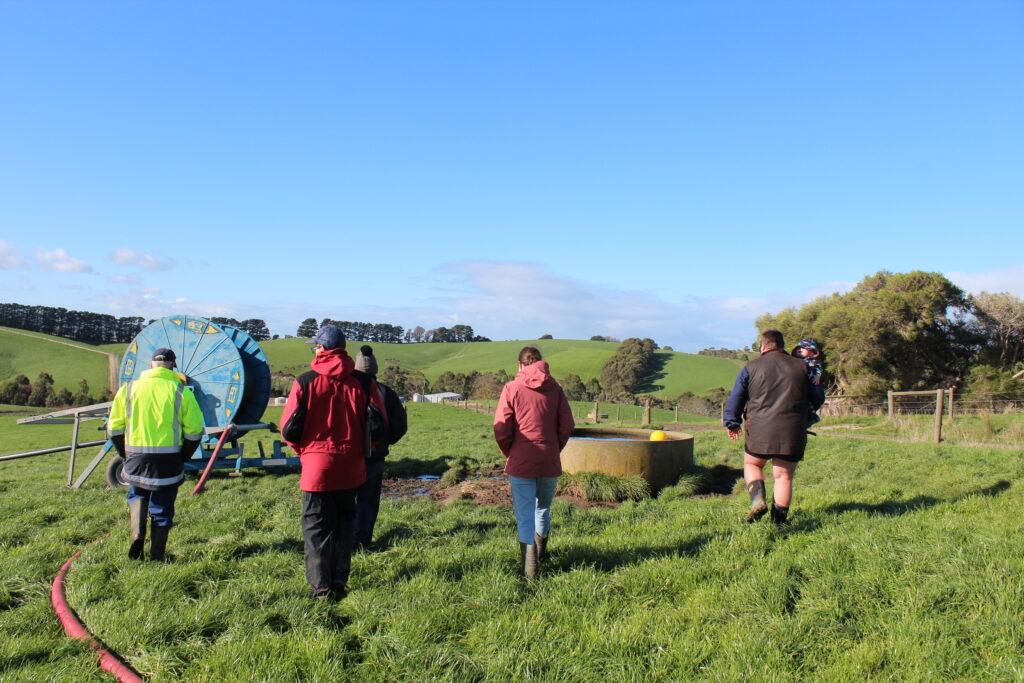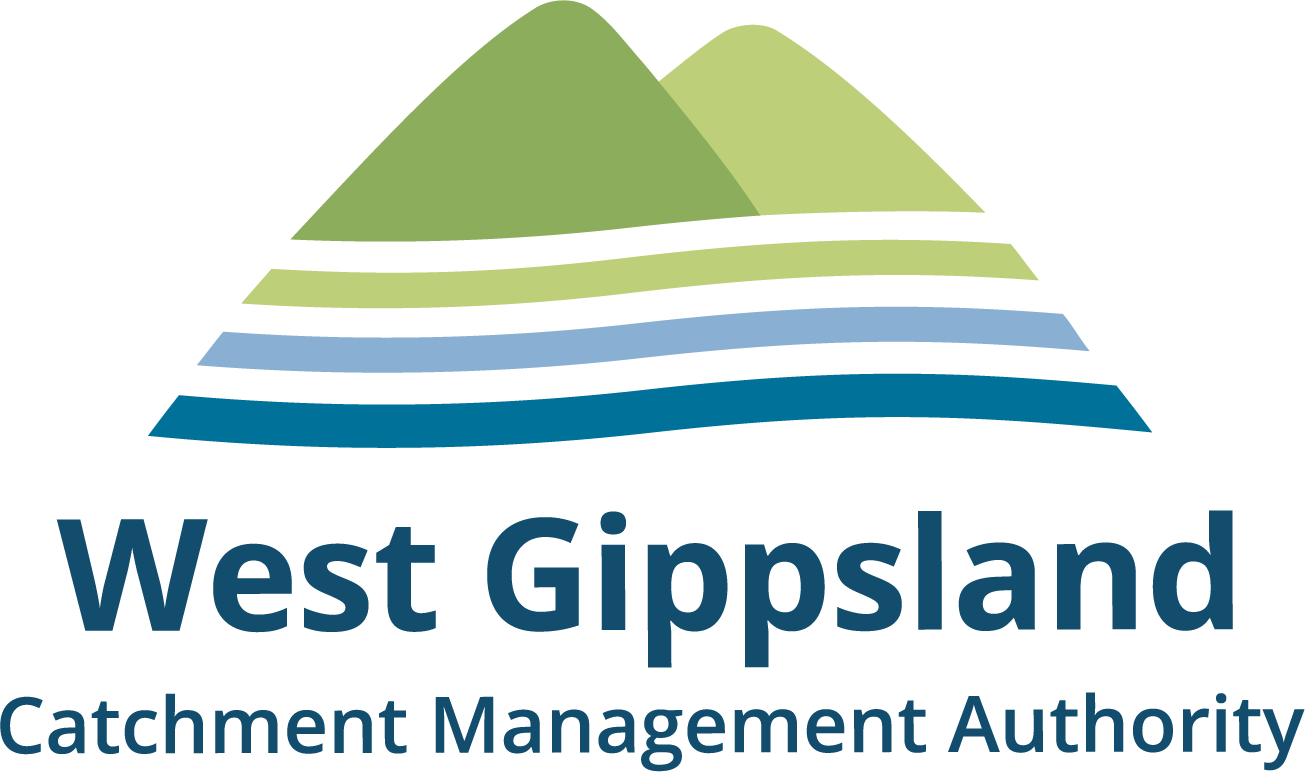Smart Farmers reducing effluent entering Corner Inlet
West Gippsland Catchment Management Authority, partners and South Gippsland farmers recently gathered to talk about best practice for managing dairy effluent with the bigger picture of reducing nutrients entering Corner Inlet.
Over many years, a series of projects carried out across all catchments west of the Agnes River through to the Yanakie Isthmus has been making a positive difference to the health of world renowned Corner Inlet and also making farms more efficient and profitable.
At the Best Practice Effluent Management workshop recently convened by the West Gippsland CMA, two dairy farmers opened their properties for fellow farmers and farm consultants to inspect and discuss two dairy effluent systems that have been upgraded as part of the Corner Inlet Dairy Effluent Planning Project.
“The project involved 30 farms, covering a milking area of 5,808 hectares,” said Shayne Haywood, Manager – Land and Biodiversity for West Gippsland CMA.
“All farms had an Effluent Management Plan developed which guided the key recommendations for the effluent system upgrades. The project resulted in effectively doubling the effluent irrigation areas across these farms, from 1,042 hectares at the beginning of the project to 2,122 hectares available for irrigation at the end of the project.”
This increase in effluent irrigation area resulted in a reduction of fertiliser required, as dairy effluent is a highly valuable source of nutrients particularly nitrogen and potassium.
Other results were a combined total reduction of 2,594 tonnes of fertiliser (Urea, SSP, MoP & SoA) meaning a total saving for the district of $1,956,163 – an average saving of $65,205 per farm. The works will also stop 162 tonnes of nitrogen, 104 tonnes of phosphorus, 166 tonnes of potassium and 146 tonnes of sulphur from entering the waterways and larger Corner Inlet Catchment.
Hayden Need at his Hazel Park farm in the rolling green hills above Corner Inlet hosted the second site visit on his family farm that milks 320 cows. “The system is simple and the setup is a lot more efficient,” said Hayden.
“I use it with the seasons – in late Spring and Autumn and it’s also guaranteed to grow crops in summer. It can turn a paddock that would have nothing into a ten tonne turnip crop.”
Hayden grew up on a family farm and is now forging his own business which he plans to develop and set up for his three children to take over in the future.
“Everyone in the area is involved – it’s a pretty simple process. We have also fenced and planted the gullies.”
Overall the project presented benefits to the participating dairy farmers as well as the catchment and was a real win:win, providing the farmers savings through a reduction of fertiliser required, improving the management of effluent and infrastructure available through funding, while ultimately protecting the waterways and Corner Inlet Ramsar listed wetlands.
This project is supported by West Gippsland Catchment Management Authority, through funding from the Australian Government’s National Landcare Program.
